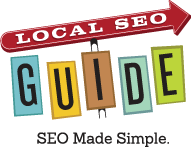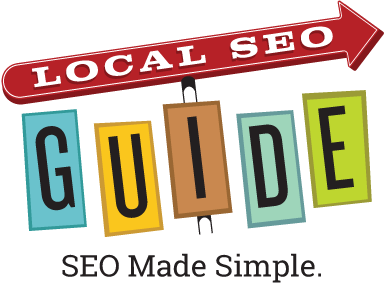Internet yellow pages sites (IYPs) generate a lot of traffic. Superpages.com has over 21 million visitors per month. Yellowpages.com has over 19 million. A lot of this traffic comes from search engine optimization. The IYPs target two main types of searches – business name searches (e.g. Joe’s Plumbing) and city/category searches (e.g. Plumber in Austin, TX). We’ll leave the business name search issue for another post, but there is absolutely no reason why your local business website can’t rank for city/category searches and start getting some of that traffic for yourself.
How do IYPs rank for city/category searches? It’s pretty simple: They have a directory of links on their site that will efficiently take the clicker (or a search engine robot) to a page for every business category they display in every city they service. Here’s Yellowpages.com’s directory system:
Top Cities Links Top Categories Links Category in City Search Results Page Business Detail Page
Once you (or a search engine robot) get to the Category in City page (aka the “search results page” or SRP) that page is set up to target a phrase such as “Plumber in Austin, TX” in the search engines. You will see that phrase appear in the title of the page – the text in that blue bar above your browser – as well as in numerous instances of text in the body of the page. There’s a also good chance that any link the IYP has to this page has the words “Plumber” or “Plumber in Austin, TX” in the text of the link (aka the “anchor text”). The names of the businesses also include variations on the term “Plumber” which helps. And chances are the IYP has a large number of links from other sites to various pages on its site which is important. What others say about you matters in life as well as in SEO.
“So what?” you say? I’m just teeny weeny Joe’s Plumbing website. How am I supposed to compete against the big bad yellow pages? Easy.
So let’s say you are a plumber in Pleasanton, CA and advertising online. My guess is you are paying a site like Yellowpages.com to drive traffic and leads to your site and a lot of that traffic may in fact come from search engines like Google & Yahoo. So why not try to get some of that traffic for yourself? Your site may not be as big as an IYP and you may not have as many links (or any links for that matter) from other sites, but guess what, you’re a Plumber in Austin, TX and that’s something Yellowpages.com will likely never be.
Here’s the plan – Create a directory on your site and target searches for your services and your location. Here’s how:
- Come up with a list of services that you offer. Be creative. You probably offer a lot more than you think. Don’t leave anything out. If you can sell it chances are someone is searching for it.
- Come up with a list of related service providers in Austin, TX (or wherever you are) that you commonly refer customers to and put them into different service categories (e.g. pipe cleaning, septic tank service, etc.).
- Take both lists and think about what are the most common terms potential customers might use to search for each of the service categories. For example if you wrote “toilets” as a service maybe “toilet repair” and or “toilet installation” might be what people are looking for. Rename each service category with what you think is the best term. There are various keyword tools you can use to figure out what might be the best term but you can probably come up with some good guesses yourself.
- Take all of the services you came up with from #1 and create an “our services” list of links and put them on your home page (if you don’t want to put them on your home page create an “Our Services” page and put them there but make sure you link to that page from the home page). Each link should link to a page that targets the keyphrase of your service plus the city (e.g. “toilet repair in Austin, TX”). The keyphrase should be in the title tag of the page and the content of the page should be about your fabulous toilet repair service in Austin, TX. It helps if you have someone on your team who can write and understands how to target keywords in copy but don’t sweat it if you need to have the neighbor’s kid do it. Just make sure it’s coherent and targets your keywords.
- Take all of the services you came up with from #2 and create a “recommend Austin, TX services” section on your home page with a list of these links (or create a separate page as in #4). Each link should link to a page that targets the keyphrase of the service plus the city as in #4. The content of these pages should also include a list of every business in the city that you recommend including the business name, address, phone # and a link to their website if available. If you can do it throw up a Google or Yahoo Map on the page just to make it look nice and write a short article (250 words) about the service category and don’t forget to mention “Austin, TX”. And since these pages might be found by people looking for “septic tank service in Austin, TX” and not your services it might be a good idea to add a section on these pages that promotes your services or any special offer that you have going on or get an email address so they’ll think of you when they need you.
- Once you have the above done the next thing you’ll need are links. I am sure there are plenty of sites out there that will give you links, you just need to ask. Call the guys you always refer people to, call your local paper, call the local sites you check out. Don’t forget the chamber of commerce and the Kiwanis Club, or Rotary or whatever you’re conforming group you’re into. Get all of these sites to link to you with your targeted phrases in the anchor text of the links (e.g. “Plumber in Austin, TX). If you can’t get anyone to give you links then offer money for them. How much? Hard to say but you’re a business guy right? So negotiate. Budget a few hundred bucks to start and see what happens. More on link building later.
- And voila you are now an online yellow pages. Wait for Google to crawl your new pages and keep an eye on the traffic using a free web analytics service like Google Analytics.
Self Serving Warning: I read an online guide on how to change a toilet fill valve and did it myself but the thing still leaks a little. Although these are the basic steps it requires a bit more detail. Whenever possible ask a professional for help.


6 Response Comments
could 1-4 be just as easily accomplished with a blog and categories?
Absolutely
Just a small question, does the same apply for classified ads?
si
Yawn and have yet another directory guide to local stuff ..that will never be used. .Sorry but better to be spending time just ranking you site ? The webs filled with local guides and directorys dont need anymore.
James
@James,
I think you overlooked the first half of the post. The point of the directory is not for anyone to really use it as a local directory to find local services. The point is to create an internally well-linked, search engine optimized, geo-modified collection of services so that you show up above the IYPs in SERPs when someone searches for your service.
@Andrew,
I really don’t see the necessity of creating the pages for other businesses. Wouldn’t a set of “localized service pages” for only your own business be just as useful, ie throw out step 2 and 5 and only keep your stuff.
On a similar note, do you think one of the following linking structures has an advantage in terms of local SEO over another?
yourdomain.com/service-yourtown vs
yourdomain.com/service/yourtown vs
yourdomain.com/yourtown/service